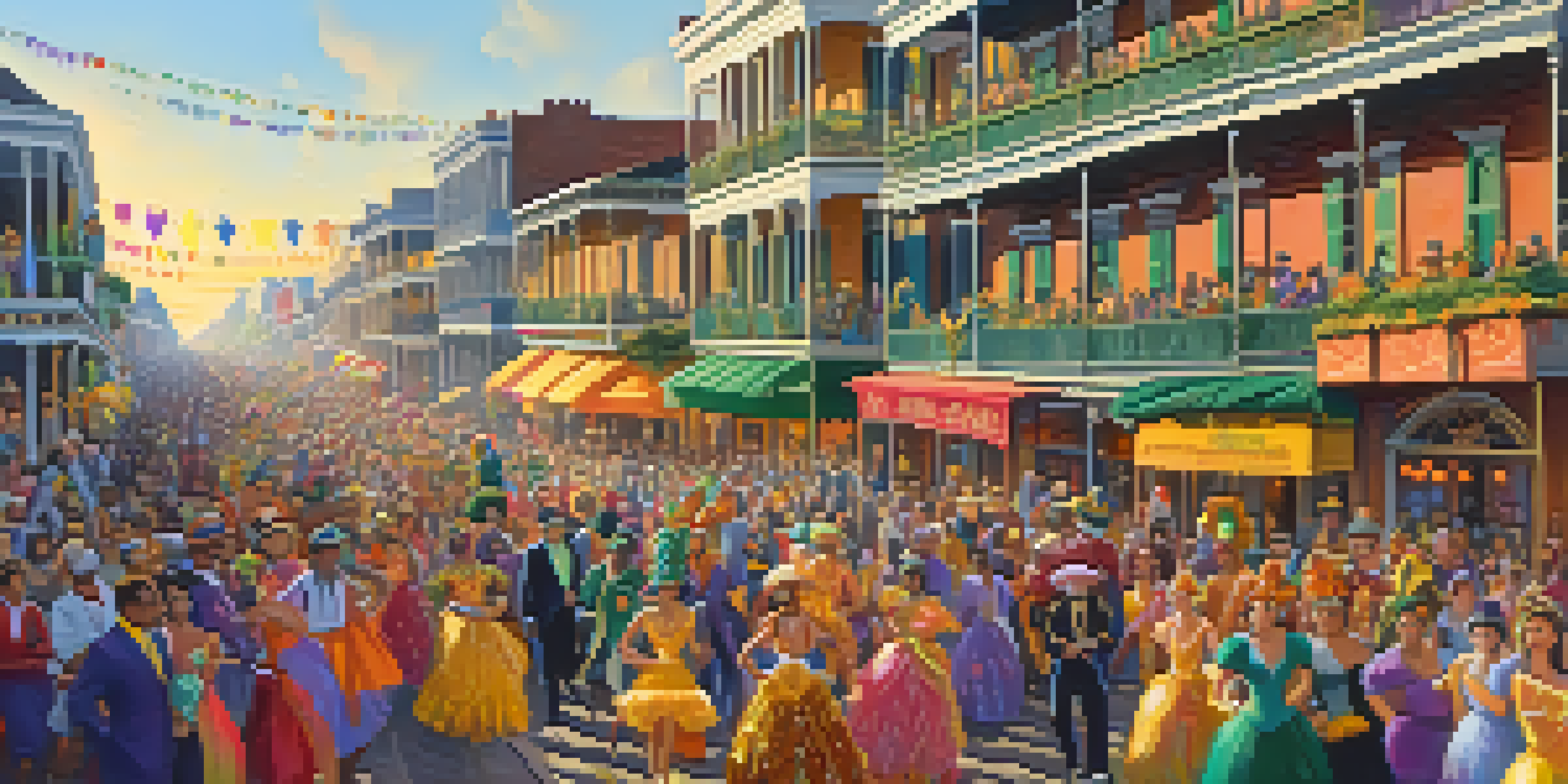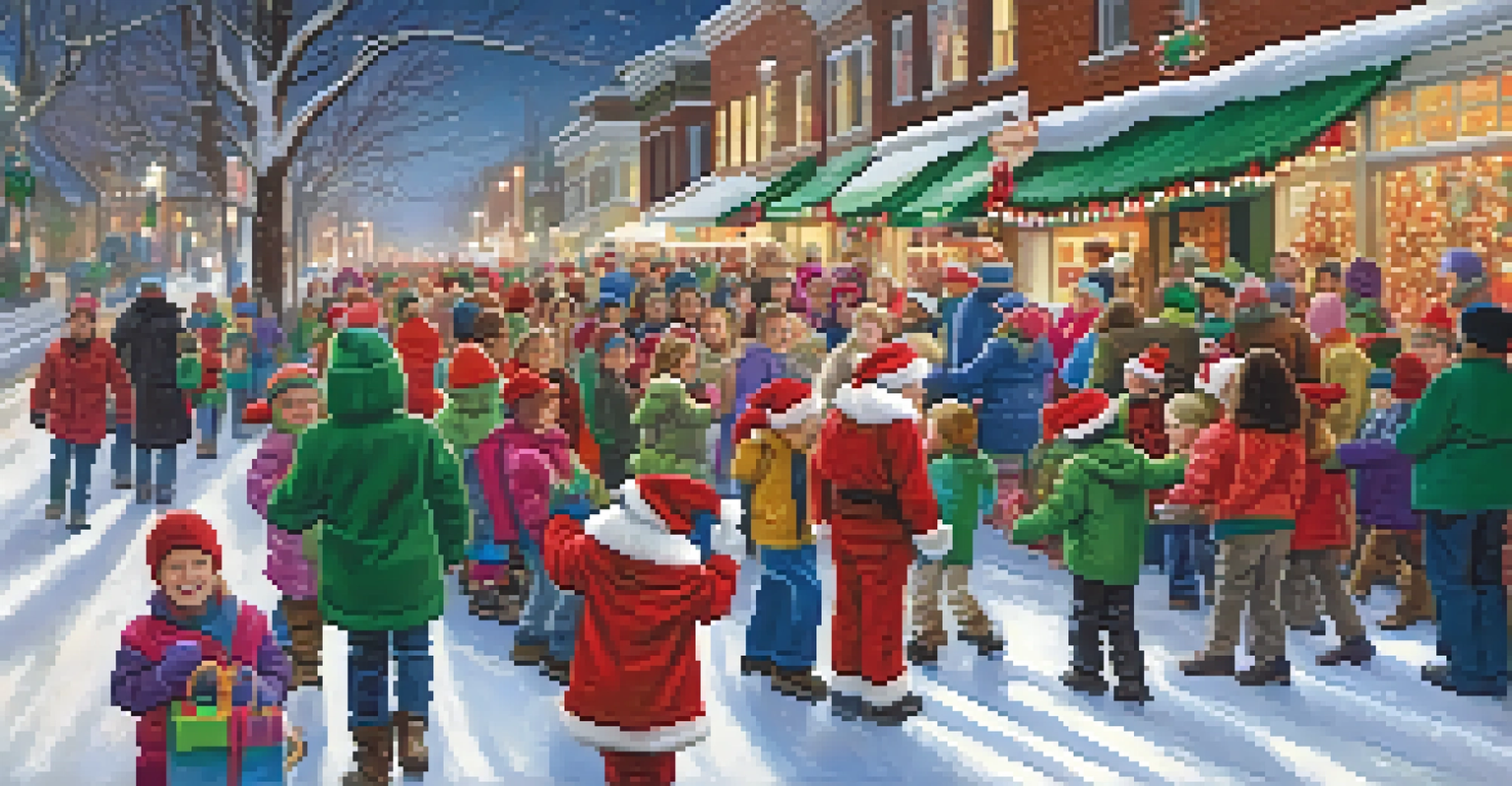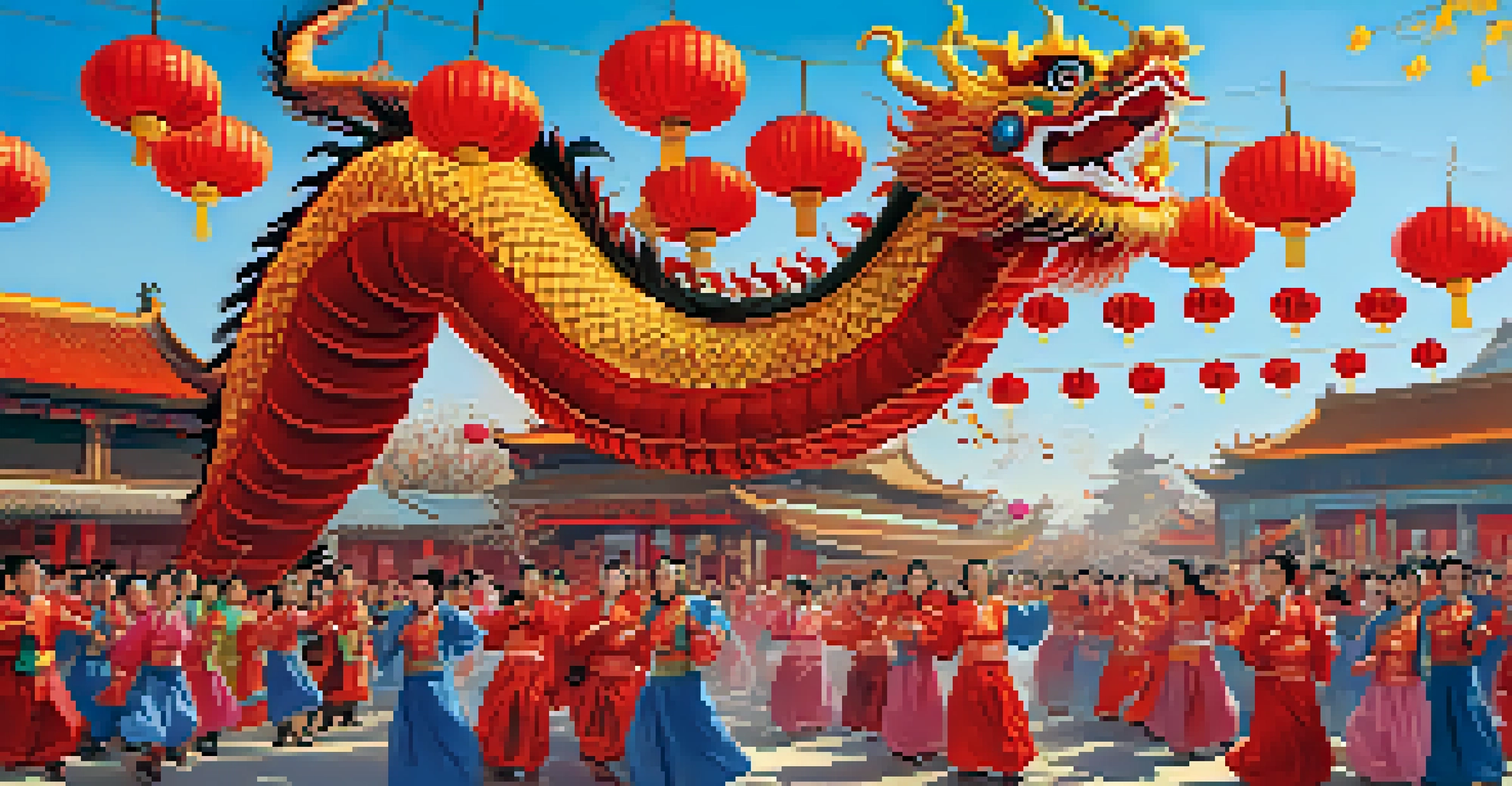Annual Parades: Colorful Processions in the City

The Rich History Behind Annual Parades
Annual parades have a deep-rooted history that dates back centuries. Often originating from ancient festivals, these colorful processions were celebrations of harvests, victories, or religious events. Over time, they evolved into community-wide celebrations, incorporating local culture and traditions.
Parades are a way to celebrate the community and bring people together, fostering a sense of belonging and pride.
For instance, the famous Mardi Gras parade in New Orleans traces its origins to medieval Europe and has transformed into a lively display of music, dance, and vibrant costumes. Such events not only showcase a city's heritage but also emphasize the unity and spirit of its people.
Understanding the historical context of these parades enriches the experience for participants and spectators alike. It reminds us that we are part of a larger tapestry woven from the threads of our ancestors' celebrations.
The Different Types of Annual Parades
Annual parades come in all shapes and sizes, each with its unique flair. From the grand floats of Thanksgiving parades to the vibrant costumes of Pride parades, each event brings its own slice of joy and cultural expression. These parades often highlight specific themes or causes, making them significant to the communities they represent.

Cultural parades, such as the Chinese New Year celebrations, feature traditional dragon dances and intricate costumes that represent rich histories. Meanwhile, holiday parades often showcase festive cheer, with Santa Claus making a grand appearance during Christmas time.
Parades Celebrate Community Spirit
Annual parades foster a sense of belonging and pride, bringing together local organizations and residents to create vibrant celebrations.
No matter the theme, every parade acts as a platform for communities to come together, celebrate diversity, and promote understanding among different cultures.
The Role of Community in Parades
Community involvement is at the heart of any successful parade. Local organizations, schools, and businesses often collaborate to create the floats, costumes, and performances that bring the parade to life. This collaborative effort fosters a sense of belonging and pride among residents.
The beauty of a parade is not just in the spectacle, but in the shared joy it creates among diverse individuals.
Volunteers play a crucial role, dedicating their time and effort to ensure everything runs smoothly. Their enthusiasm is infectious, transforming a simple procession into a vibrant celebration filled with laughter and camaraderie.
Moreover, parades provide a platform for local talent, as musicians, dancers, and artists showcase their skills. This not only entertains the crowd but also nurtures the creative spirit of the community.
The Impact of Parades on Local Economy
Annual parades can have a significant positive impact on the local economy. With thousands of spectators flocking to the event, local businesses like restaurants, shops, and hotels often see a surge in customers. This influx can be a lifeline for small businesses, especially in regions that rely on tourism.
Additionally, parades create job opportunities, from event planning and security to catering and retail. This job creation can invigorate the local job market, providing work for many community members.
Economic Boost from Parades
Parades positively impact local economies by attracting visitors, increasing business for local shops, restaurants, and hotels.
The financial boost from parades often extends beyond the day of the event, as visitors may return to explore the area further, benefiting the local economy in the long run.
Parades as a Form of Artistic Expression
Parades are a vibrant canvas for artistic expression, showcasing creativity in various forms. Floats adorned with intricate designs, performers in elaborate costumes, and the rhythm of live music all come together to create a feast for the senses. Each element reflects the artistic culture of the community, making the event unique.
Artists, whether they be painters, sculptors, or musicians, often collaborate to bring their visions to life during parades. This cross-disciplinary collaboration not only highlights individual talents but also reinforces the community's collective identity.
By celebrating art in public spaces, parades inspire others to appreciate creativity and even participate in future events, fostering a culture of artistic engagement.
The Environmental Considerations of Parades
While parades are a source of joy, they also raise important environmental considerations. The large crowds and elaborate floats can lead to increased waste and pollution, prompting organizers to seek more sustainable practices. Many cities have started implementing eco-friendly initiatives to minimize the environmental footprint of these events.
For instance, some parades are now focusing on using biodegradable materials for decorations and encouraging spectators to bring reusable items. Additionally, promoting public transportation or carpooling can help reduce traffic and emissions during these large gatherings.
Artistic Expression in Parades
Parades serve as a canvas for artistic expression, showcasing creativity through elaborate floats, performances, and community collaboration.
By adopting sustainable practices, parades can continue to be a source of celebration without compromising the health of our planet, setting an example for future generations.
The Joy and Unity of Celebrating Together
At their core, annual parades embody joy and the spirit of unity. They bring people together from all walks of life to celebrate shared values, traditions, and community pride. As families gather along the streets, laughter and cheer fill the air, creating an atmosphere of belonging and happiness.
Parades offer a rare opportunity for people to step away from their daily routines and connect with others. Whether it's watching a parade with friends or meeting new faces in the crowd, the sense of camaraderie is palpable.

Ultimately, parades remind us of the importance of community and the power of shared experiences. They are a celebration of life, culture, and the connections that bind us all.